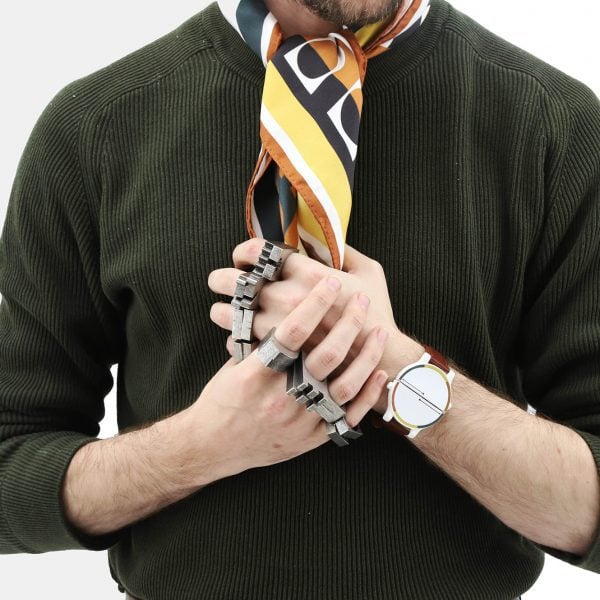[ad_1]
A whole chess set was translated into wearable accessories in this prototype by French designer Louis Le Joly Senoville, a fan of the game who wanted to make it possible to play anywhere at any time.
The Ha Mat wearable chess set consists of 32 rings representing the playing pieces for two players, a large silk square that doubles as a game board, and a watch that can split into two to serve as adjacent timers.
The whole set is united by a colour scheme of golds, browns and blacks and was manufactured in France by small producers.
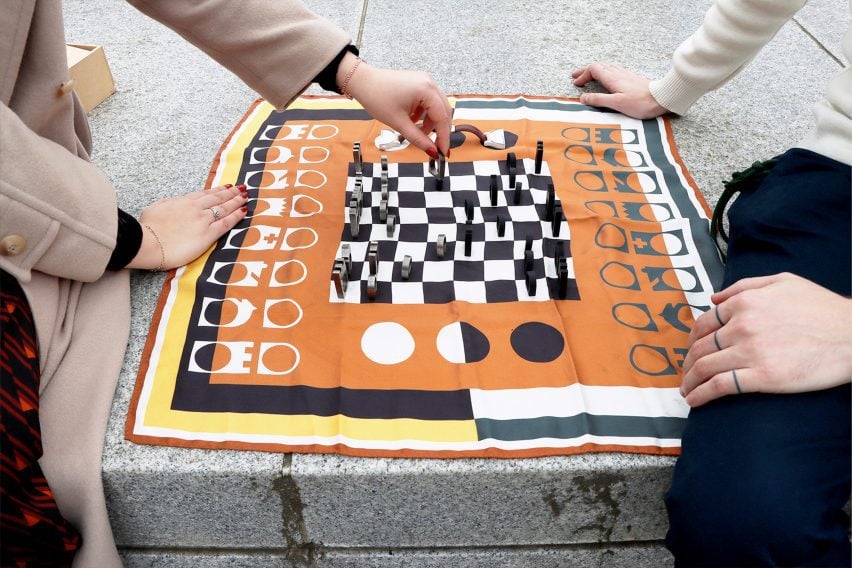
Le Joly Senoville created the set as his final-year project in the Product and Industrial Design degree at London school Central Saint Martins, driven by a love of the game and a desire to come up with a modern iteration that would encourage play in more locations.
“Chess is an intergenerational, timeless, iconic and international game,” said Le Joly Senoville. “Due to its age and popularity, a large part of the population knows it at least by name, and some still play it occasionally or regularly.”
“Being 1,500 years old, its history and evolution are linked to societal culture. For these reasons, I considered chess the perfect medium to work with.”
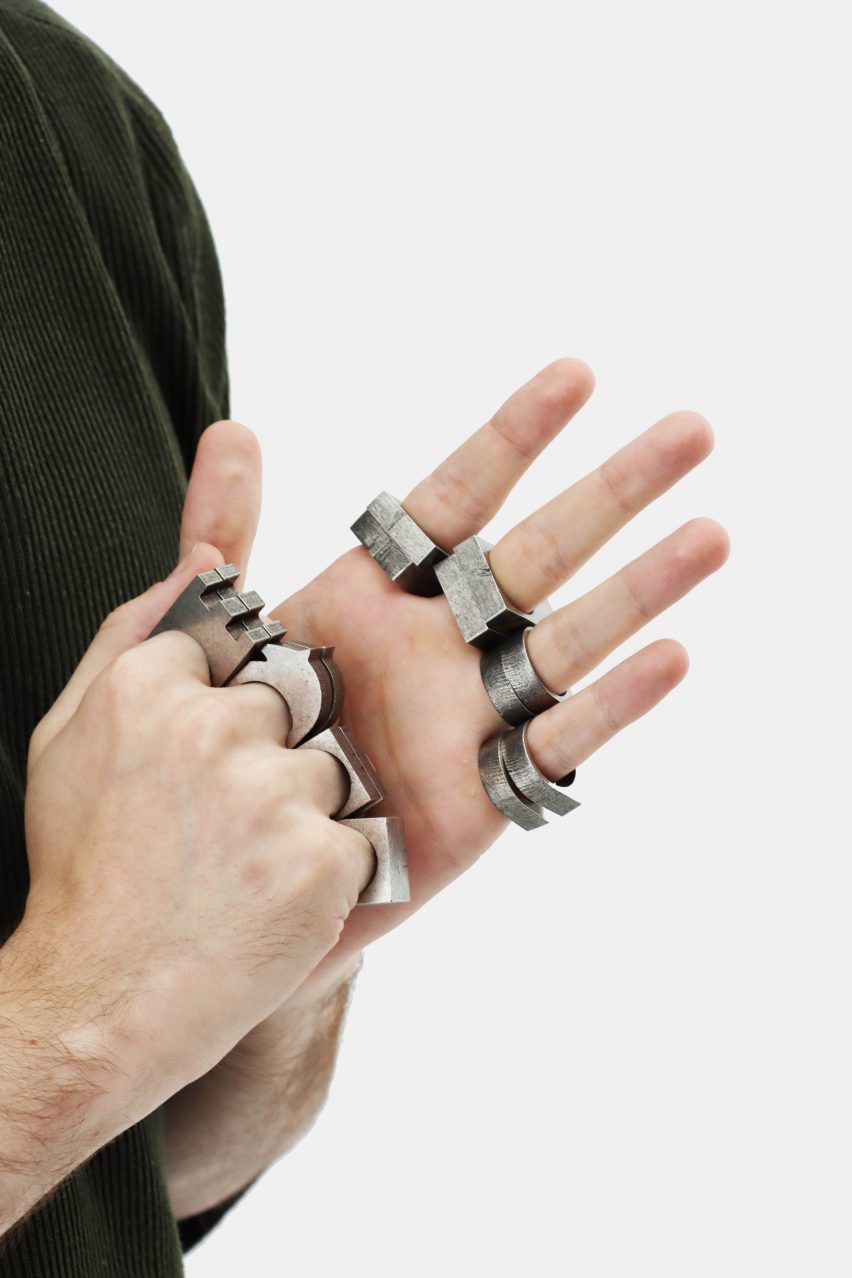
Le Joly Senoville said he took inspiration from various historical concealed wearable objects – including silk maps of France used by the British Royal Air Force during the second world war, 19th-century French military training scarves and a whistle ring that the designer saw in a museum – in developing the design of Ha Mat.
The kit’s 32 chunky rings reinterpret traditionally columnar chess pieces as simplified shapes created by making cut-outs into a rectangular block of metal.
Each has a flat base so it can stand on the board, a circle cut-out to fit a finger, and a top with a graphic relief that represents the piece, whether that is through a cross for the king, a zigzag evoking the usual crown of the queen or a reductionist horse head for the knight.
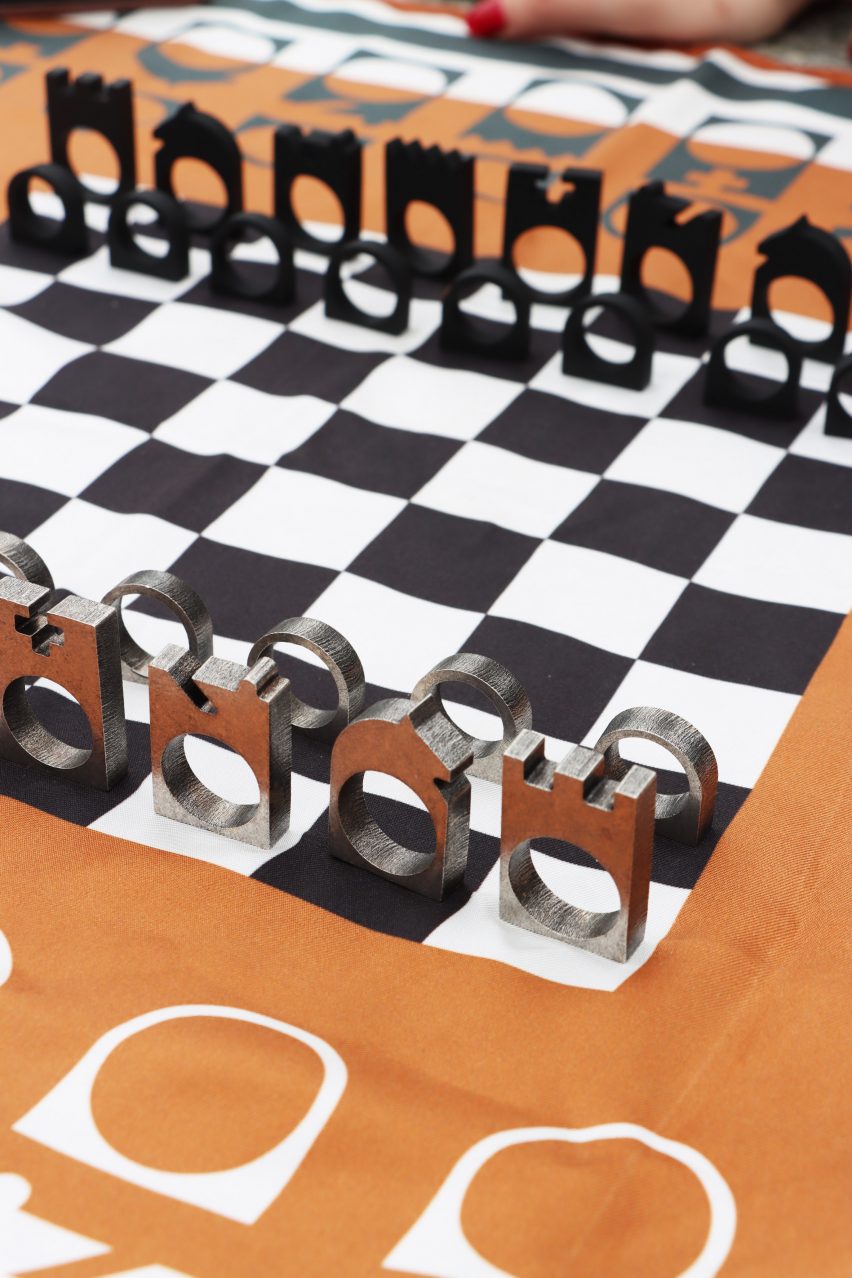
“The knight was the most complex piece to make, as is often the case in every chess game,” Le Joly Senoville told Dezeen. “More symbolic, graphic and noble, this piece shows a strong identity that shines through both on the board and the finger.”
To produce the pieces, the designer worked with a French company that specialises in waterjet metal cutting to cut the pieces from brass plate. They were then galvanised with a layer of silver.
After creating the rings, the design of the scarf came easily, said Le Joly Senoville.
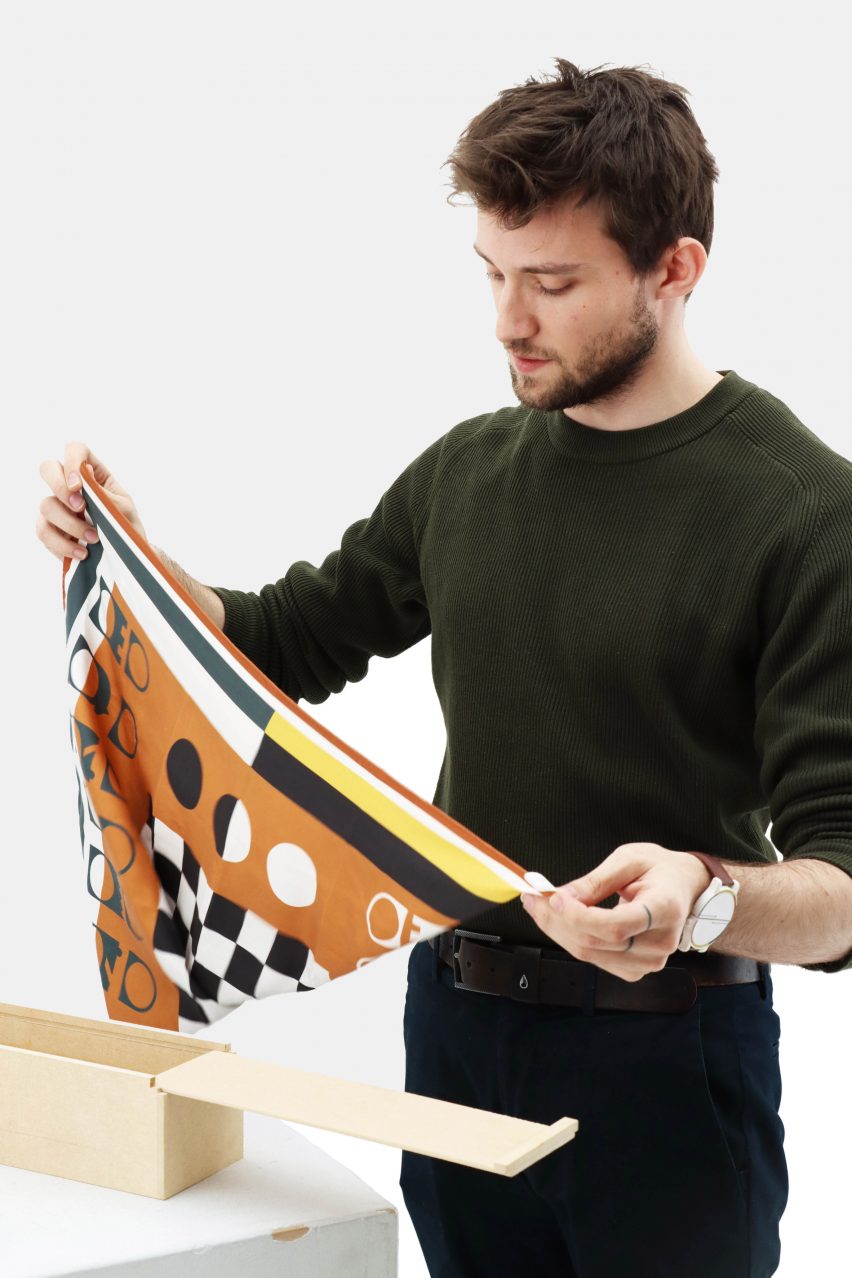
“First, the size of the chessboard was determined by the size of the pieces, and second, the design of each pawn became a graphic element integrated into the scarf,” said the designer.
“Above all, the goal was to design a product that could be worn aesthetically without necessarily recognising the game at first glance.”
The designer also developed the colour palette for the project at this time, choosing colours that would evoke “noble” materials used for chess sets in the past, such as wood and leather.
Finally, Le Joly Senoville developed the watch, which he says is capable of both showing the time when worn on the wrist and also functioning as a chess timer for both players when divided into two.
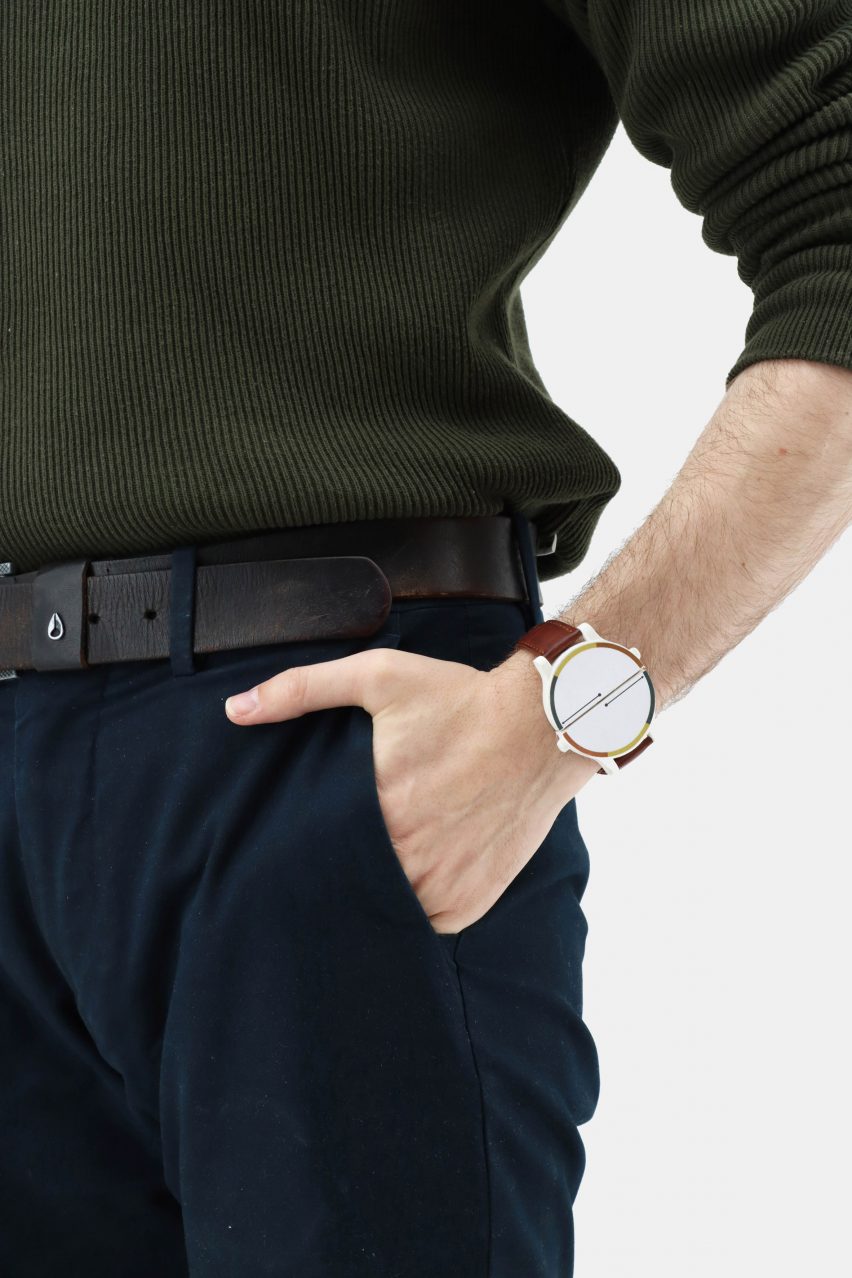
“The watch was the most technical and complicated product to produce as a prototype,” said Le Joly Senoville. “The prototype was developed with watchmaker friends who accepted the challenge of making this purely artisanal object.”
The designer manufactured the kit entirely in France, saying he wanted to challenge the usual “limitless production” model based on overseas manufacturing in the design, textile and jewellery industries.
The silk for the scarf comes from certified deadstock from the luxury LVMH group and was obtained through an online resale platform, and the watch is made from aluminium and leather.
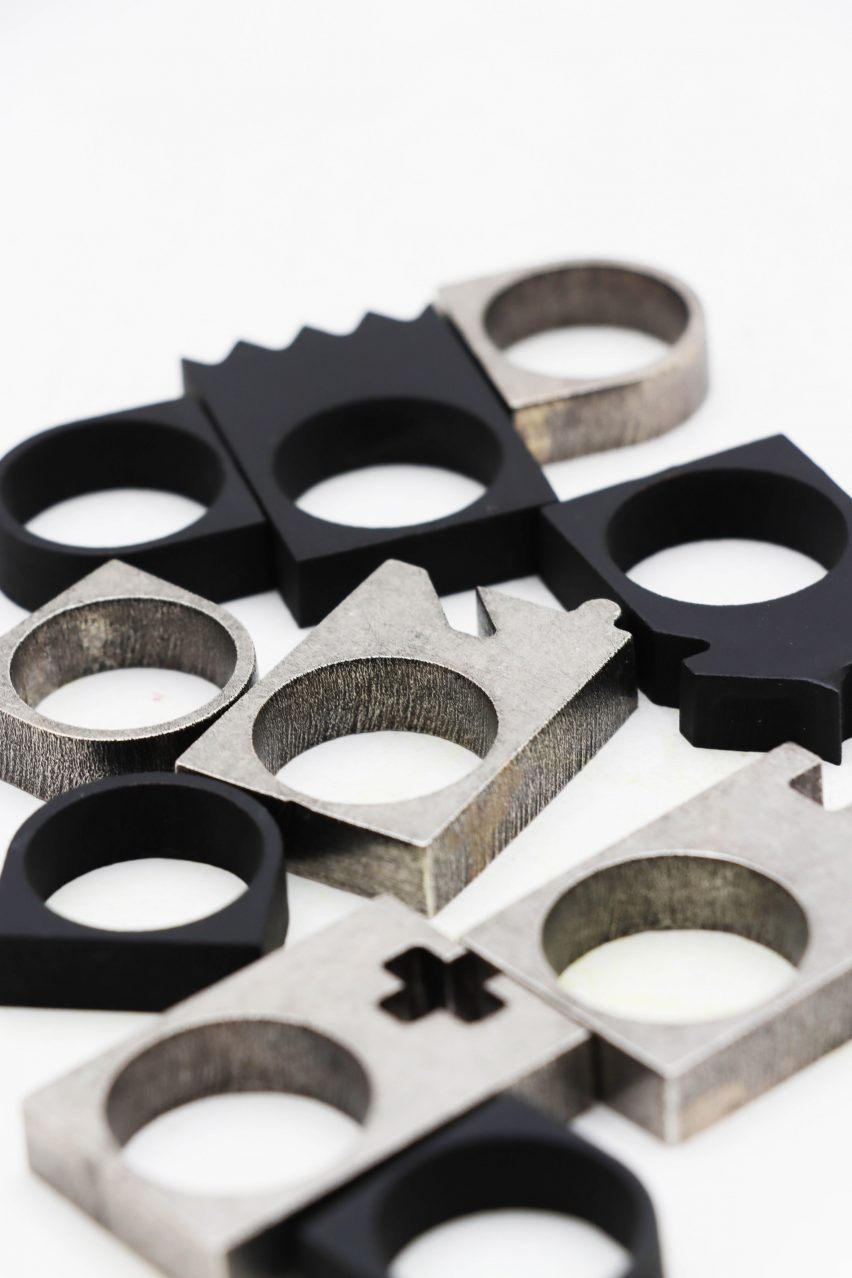
The title Ha Mat is a shortened version of the phrease “eched ha mat”, which means “check mate” in the Breton language of Brittany, where Le Joly Senoville is from.
Previous chess sets featured on Dezeen include the Negative Space Chess Set, designed by Stefan Gougherty and made by drilling voids into transparent acrylic blocks, and the Democratic Chess Set by Florian Hauswirth, who designed pieces so that they can be stacked together to gain combined abilities.
[ad_2]
Source link
